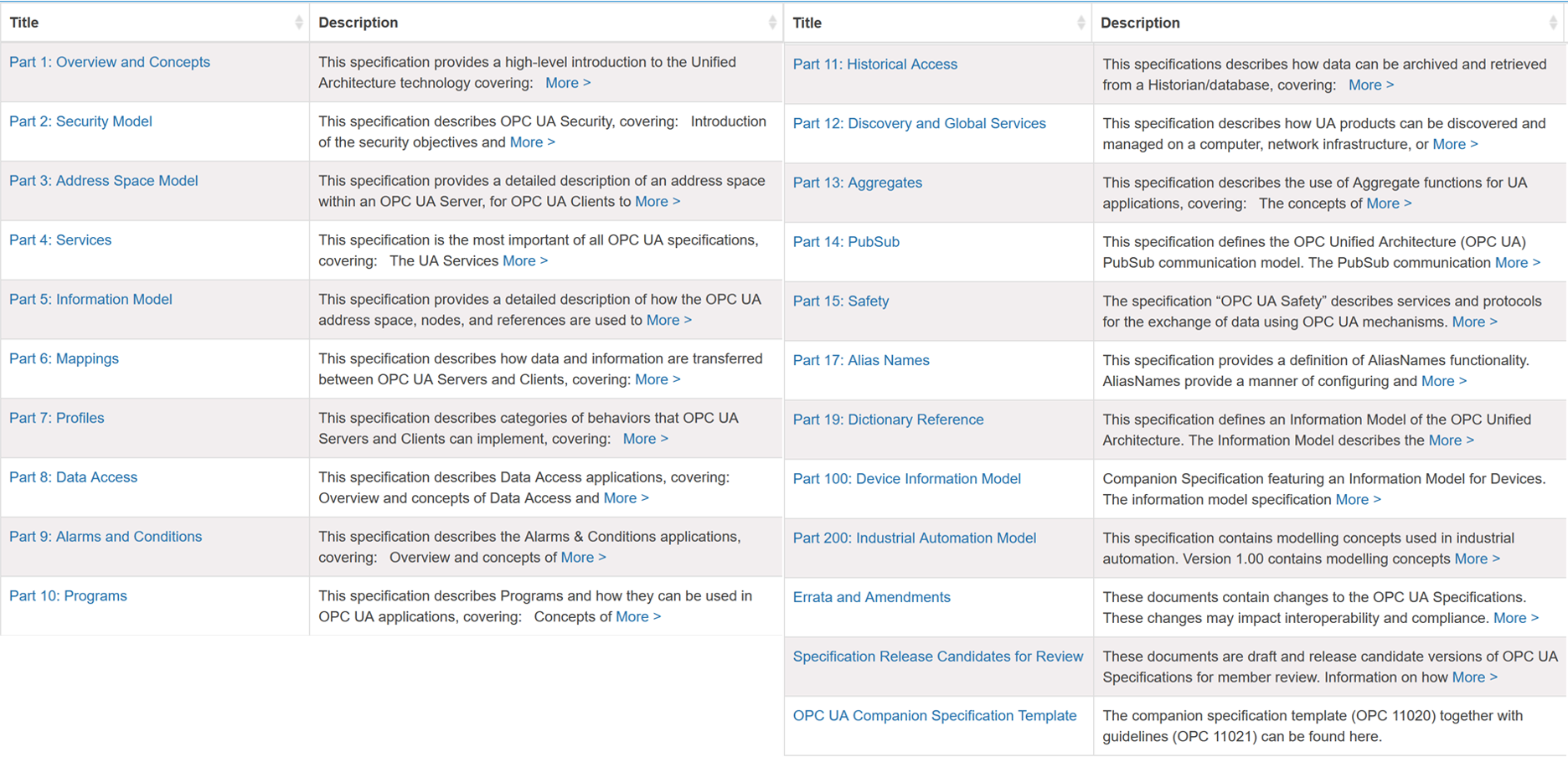...
- Functional equivalence: all COM OPC Classic specifications are mapped to UA
- Platform independence: from an embedded micro-controller to cloud-based infrastructure
- Secure: encryption, authentication, and auditing
- Extensible: ability to add new features without affecting existing applications
- Comprehensive information modeling: for defining complex information
Functional Equivalence
Building on the success of OPC Classic, OPC UA was designed to enhance and surpass the capabilities of the OPC Classic specifications. OPC UA is functionally equivalent to OPC Classic, yet capable of much more:
...
Integration between OPC UA products and OPC Classic products is easily accomplished with COM/Proxy wrappers that are available in the download section.
Platform Independence
Given the wide array of available hardware platforms and operating systems, platform independence is essential. OPC UA functions on any of the following and more:
...
OPC UA provides the necessary infrastructure for interoperability across the enterprise, from machine-to-machine, machine-to-enterprise and everything in-between.
Security
One of the most important considerations in choosing a technology is security. OPC UA is firewall-friendly while addressing security concerns by providing a suite of controls:
- Transport: numerous protocols are defined providing options such as the ultra-fast OPC-binary transport or the more universally compatible JSON over Websockets, for example
- Session Encryption: messages are transmitted securely at various encryption levels
- Message Signing: with message signing the recipient can verify the origin and integrity of received messages
- Sequenced Packets: exposure to message replay attacks is eliminated with sequencing
- Authentication: each UA client and server is identified through X509 certificates providing control over which applications and systems are permitted to connect with each other
- User Control: applications can require users to authenticate (login credentials, certificate, web token etc.) and can further restrict and enhance their capabilities with access rights and address-space “views”
- Auditing: activities by user and/or system are logged providing an access audit trail
UA OPC Markets & Collaboration
The OPC Foundation facilitates the adoption of OPC Technology through collaboration with other international standards organizations in order to provide Data inter-operability.
...
For further information on the OPC UA, please see attached below the OPC UA Open IEC 62 541 (current) Standard specification Documentation from Jan 2021.
View file name OPC UA IEC Open 62 541 Jan 2021.pdf height 250400
Part 100 Device Interface, and Part 200 Industrial Automation are also available. These build on the Core set of Specifications, and adds new common definitions that then are used in different companion specifications. E.g. both OPC UA for Analyser Devices and OPC UA for Machinery builds directly on part 100.
In contrast to the COM-based specifications, the UA specifications are not pure Application specifications. They describe typically UA internal mechanisms, which get handled through the communication stack and are normally only of interest for those that port a stack to a specific target or those that want to implement their own UA stack.
The OPC UA Application Developers code against the OPC UA API and therefore mainly use API documentation. Nevertheless, part 3, 4, and 5 may be of interest for Application Developers.
